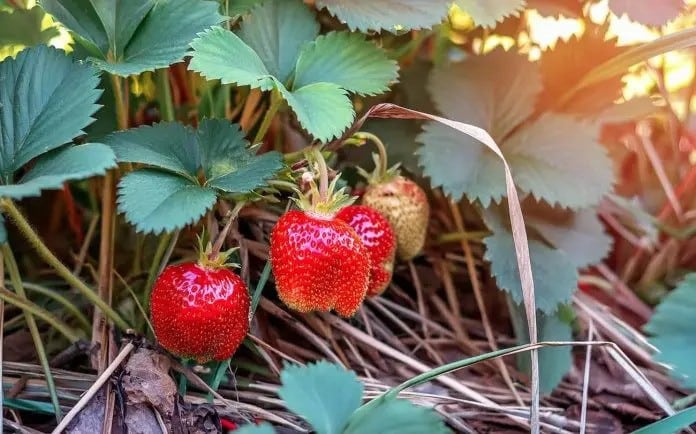
Optimizing Strawberry Growth with the Right Mulching Materials
There’s nothing quite like the joy of growing strawberries in your own garden. But it’s not as easy as it looks! You need to get the approach right to create optimal growing conditions for this delicious fruit. One of the key success factors is the use of suitable mulching materials. These protect the plant against pesky weeds, regulate the soil temperature and retain moisture – all of which help the strawberry to flourish.
The very word ‘strawberry’ in English hints at the traditional practice of mulching strawberries with straw. However, modern gardeners have a wide range of natural and artificial materials available for this purpose. Let’s take a closer look at the pros and cons of the most popular mulching materials to help you make an informed choice.
Straw Mulch
First, one of the most common and readily available materials for mulching strawberries is straw. This natural resource is easy to find in areas where crops are grown. Straw has excellent properties, allowing air and moisture to reach the plant roots, creating a favorable environment for growth and development. However, when using straw, care must be taken to ensure it is free from leaves and other plant debris, as otherwise, it can cause root rot in strawberries.
Hay Mulch
Secondly, hay is also widely used as a mulching material, and it can be easily sourced from rural areas or amateur gardeners. It is important to remember that hay can be a source of bacteria and other microorganisms, so it should be well dried in the sun before use.
Grass Clippings
Thirdly, freshly cut grass can also be an effective way to improve soil composition and protect strawberries from weeds. However, it is important to remember that freshly cut grass can heat up and raise the soil temperature.
Sawdust Mulch
Fourthly, sawdust is another popular mulching material. It decomposes slowly and provides good protection against pathogenic fungi. The downside of using sawdust is that it can attract pests and reduce the availability of nitrogen for plants.
Pine Needles
Fifthly, the use of pine needles offers good air permeability and moderate soil acidification, which promotes the growth and development of strawberries. However, collecting needles can be quite challenging and requires additional effort.
Conclusion
In conclusion, the choice of mulching material suitable for strawberry cultivation depends on various factors, such as resource availability, gardener preferences, and site-specific characteristics. Straw, hay, grass clippings, sawdust, and pine needles each have their advantages and disadvantages. By carefully analyzing them, you can make an informed decision and create ideal conditions for the growth and development of your strawberry bushes. Don’t be afraid to experiment and find the best solutions for your garden or vegetable plot.

